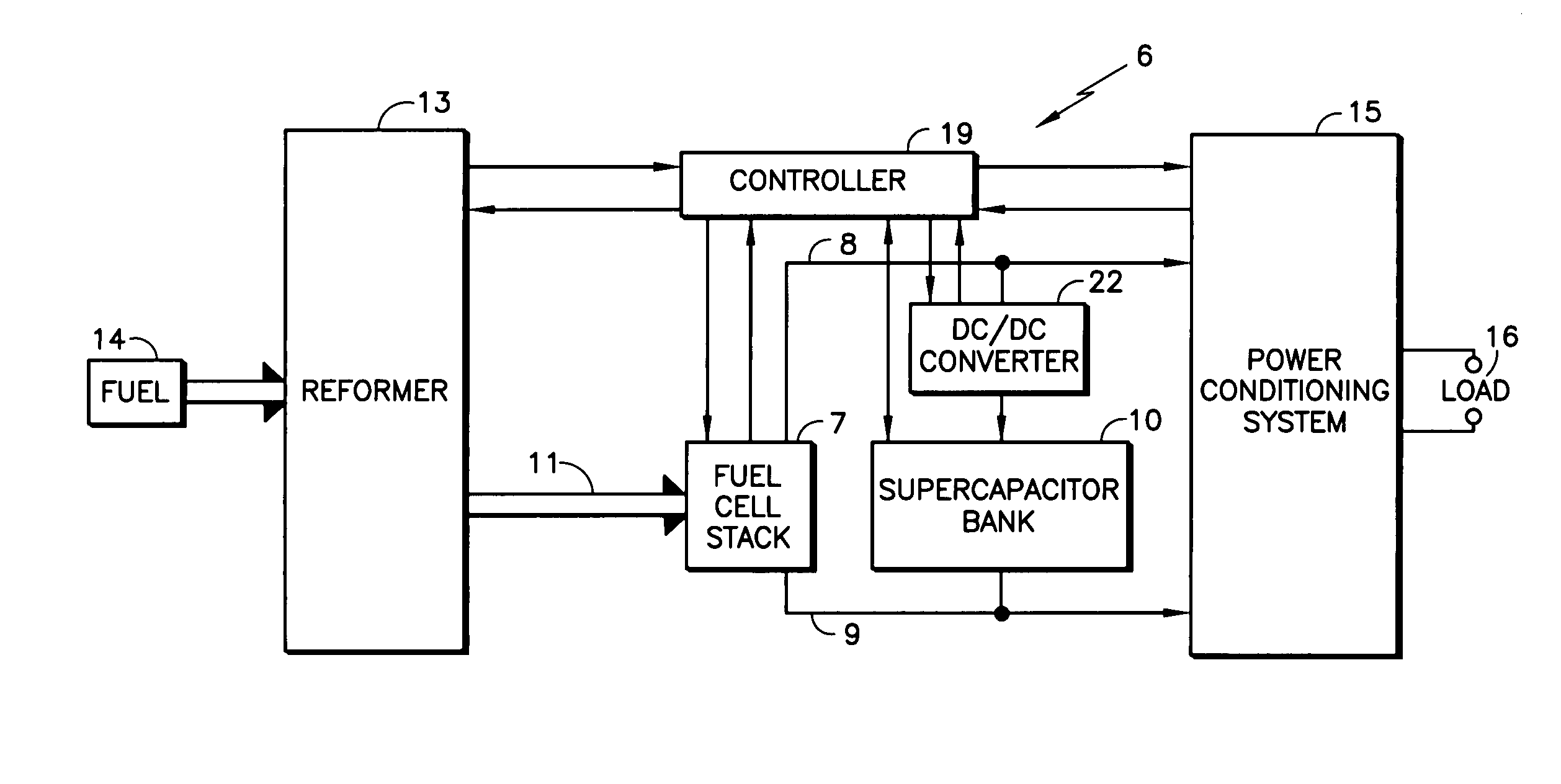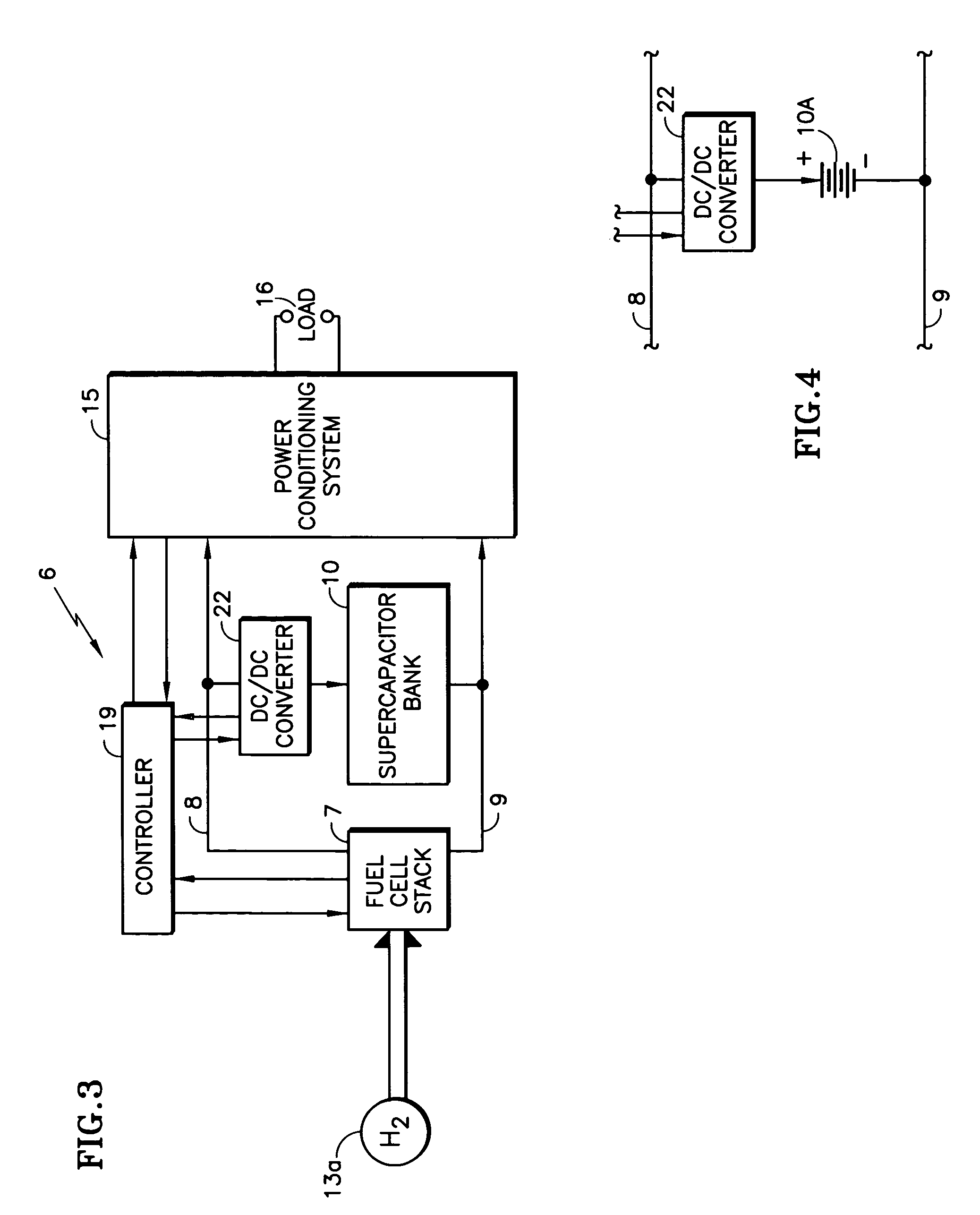Electric storage augmentation of fuel cell system transient response
a technology of electric storage and fuel cell, applied in the direction of secondary cell servicing/maintenance, electrochemical generators, transportation and packaging, etc., can solve the problems of increasing reducing the strength reducing so as to increase the capacity of the fuel cell stack and avoid the effect of weakening the fuel cell structur
- Summary
- Abstract
- Description
- Claims
- Application Information
AI Technical Summary
Benefits of technology
Problems solved by technology
Method used
Image
Examples
Embodiment Construction
[0020]Referring to FIG. 1, a fuel cell power plant 6 includes a fuel cell stack 7 having electric output lines 8, 9 with an energy storage device, such as a supercapacitor bank 10, connected directly in parallel with the fuel cell stack 7 between the output lines 8, 9, in accordance with the invention. In the embodiment herein, the fuel cell stack 7 receives hydrogen-containing fuel in a conduit 11 from a reformer 13 that converts hydrocarbon fuel from a source 14, which may, for example, be a catalytic partial oxidizer reformer system such as those disclosed in copending U.S. patent application Ser. No. 10 / 369,359, filed Feb. 18, 2003 now abandoned, or any other reformer suitable to provide innocuous hydrogen-rich fuel to a fuel cell stack.
[0021]The power on the output lines 8, 9 is controlled for its intended use by a conventional power conditioning system 15, which applies the power to a load 16 which may be a grid, an electric vehicle motor, or any other load. As used herein, th...
PUM
| Property | Measurement | Unit |
|---|---|---|
| voltages | aaaaa | aaaaa |
| voltages | aaaaa | aaaaa |
| voltages | aaaaa | aaaaa |
Abstract
Description
Claims
Application Information
 Login to View More
Login to View More - R&D
- Intellectual Property
- Life Sciences
- Materials
- Tech Scout
- Unparalleled Data Quality
- Higher Quality Content
- 60% Fewer Hallucinations
Browse by: Latest US Patents, China's latest patents, Technical Efficacy Thesaurus, Application Domain, Technology Topic, Popular Technical Reports.
© 2025 PatSnap. All rights reserved.Legal|Privacy policy|Modern Slavery Act Transparency Statement|Sitemap|About US| Contact US: help@patsnap.com



